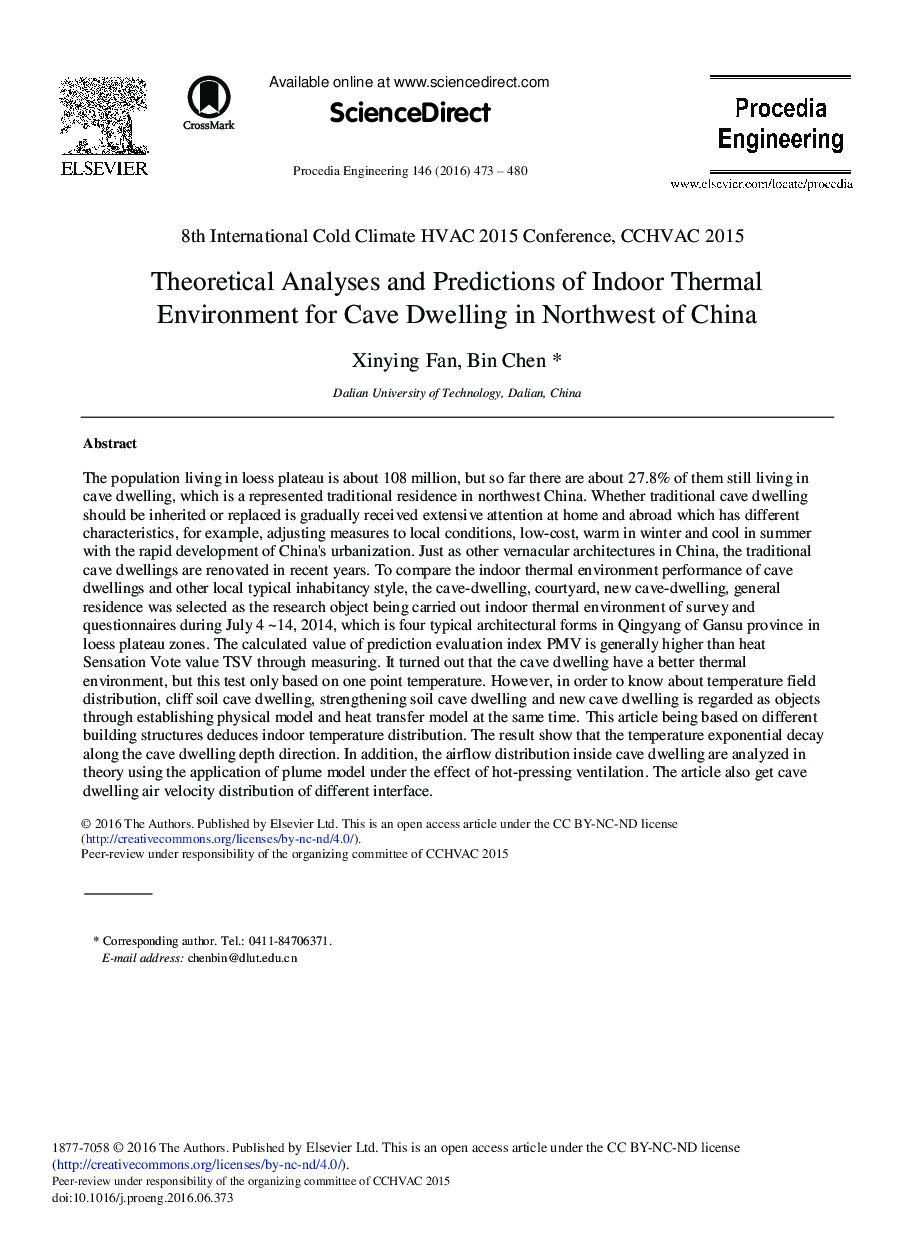| کد مقاله | کد نشریه | سال انتشار | مقاله انگلیسی | نسخه تمام متن |
|---|---|---|---|---|
| 853596 | 1470680 | 2016 | 8 صفحه PDF | دانلود رایگان |
The population living in loess plateau is about 108 million, but so far there are about 27.8% of them still living in cave dwelling, which is a represented traditional residence in northwest China. Whether traditional cave dwelling should be inherited or replaced is gradually received extensive attention at home and abroad which has different characteristics, for example, adjusting measures to local conditions, low-cost, warm in winter and cool in summer with the rapid development of China's urbanization. Just as other vernacular architectures in China, the traditional cave dwellings are renovated in recent years. To compare the indoor thermal environment performance of cave dwellings and other local typical inhabitancy style, the cave-dwelling, courtyard, new cave-dwelling, general residence was selected as the research object being carried out indoor thermal environment of survey and questionnaires during July 4 ∼14, 2014, which is four typical architectural forms in Qingyang of Gansu province in loess plateau zones. The calculated value of prediction evaluation index PMV is generally higher than heat Sensation Vote value TSV through measuring. It turned out that the cave dwelling have a better thermal environment, but this test only based on one point temperature. However, in order to know about temperature field distribution, cliff soil cave dwelling, strengthening soil cave dwelling and new cave dwelling is regarded as objects through establishing physical model and heat transfer model at the same time. This article being based on different building structures deduces indoor temperature distribution. The result show that the temperature exponential decay along the cave dwelling depth direction. In addition, the airflow distribution inside cave dwelling are analyzed in theory using the application of plume model under the effect of hot-pressing ventilation. The article also get cave dwelling air velocity distribution of different interface.
Journal: Procedia Engineering - Volume 146, 2016, Pages 473–480
